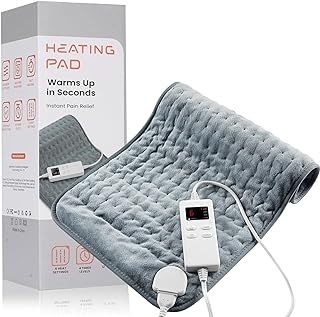5 important factors worth considering when looking for the best hydrocolloid bandages
When buying hydrocolloid bandages, it’s important to think about a few key things to make sure you get the right one for you. The amount of liquid it can absorb, how well it sticks, and how comfortable it is all make a big difference in how well it helps your wound heal and protects your skin. Knowing these important factors and why they matter can help you choose the best bandage for your needs.
See our guide to the best hydrocolloid bandages.
Size and shape of the bandage
When buying hydrocolloid bandages, the size and shape are important for taking care of wounds. Choosing the right size can help the bandage stick better and protect the wound while it heals. It’s important to pick a bandage that fits the wound well and covers it enough without overlapping too much. Matching the bandage’s shape to the wound can also help it stay in place and give good support during healing.
Picking the right size and shape can also make the bandage more comfortable and convenient to wear. A well-fitting bandage can prevent irritation from rubbing or moving around, so the person can go about their daily activities without problems. It can also look better, blending in with the skin and making the wound less noticeable. By focusing on the bandage’s size and shape when buying, people can make sure they get a product that helps their wound heal correctly and supports comfort and confidence during recovery.
Adhesive strength
When choosing a hydrocolloid bandage, the strength of the adhesive is crucial. This quality plays a big role in how well the bandage works. A strong adhesive helps the bandage stick firmly to the skin, creating a barrier that helps the wound heal faster. It keeps the bandage from moving and helps the wound stay clean and moist. So, when deciding on a hydrocolloid bandage to buy, it’s important to prioritize strong adhesive to make sure it works well and helps the wound heal quickly.
Additionally, a bandage with strong adhesive gives the wearer confidence that it will stay in place during daily activities. Choosing a bandage with good adhesive properties can provide comfort and peace of mind by ensuring the wound is protected and supported. The adhesive strength is a key feature of a reliable bandage, helping to prevent issues and support healing. Overall, when considering hydrocolloid bandages, it’s essential not to overlook the adhesive strength, as it is crucial for achieving good healing results and ensuring the user’s well-being.
Water resistance
When buying hydrocolloid bandages, it’s important to consider their water resistance. This feature is crucial for active people or those with wounds in wet areas. Choosing bandages with good water resistance means they can be worn longer and help wounds heal better by keeping them dry and protected. Having water-resistant bandages can make a big difference in how well a dressing holds up during daily activities, reducing the need for frequent changes that can be inconvenient and slow down healing.
Picking water-resistant hydrocolloid bandages shows a proactive approach to wound care. By focusing on this aspect, people show they are dedicated to faster healing and reducing the chance of infection. Water resistance in bandages creates a strong base for uninterrupted healing, allowing people to go about their daily activities confidently, knowing their wounds are well-cared for. Investing in high-quality, water-resistant bandages not only improves comfort and convenience but also paves the way for a smooth and effective healing process.
Breathability
When choosing hydrocolloid bandages, it’s important to consider how well they allow air to flow. Air circulation is key for helping wounds heal properly. By picking bandages that are breathable, you not only ensure comfort but also create a good environment for your body to naturally heal. Breathable bandages help wounds thrive, leading to faster healing and fewer complications.
A breathable hydrocolloid bandage lets moisture out while still shielding the wound, which prevents it from getting too wet and helps it heal better. Investing in breathable bandages is a way to take care of your skin. It may seem like a small choice, but it can have a big impact on your healing process. So, remember to prioritize breathability when choosing hydrocolloid bandages to give your wounds the best chance at healing quickly and smoothly.
Hypoallergenic material
When choosing hydrocolloid bandages, it’s important to consider using hypoallergenic materials. This is especially crucial for people with sensitive skin or allergies. No one wants to deal with more irritation or discomfort while trying to heal a wound. By picking hypoallergenic options, you can reduce the risk of negative reactions and make the healing process smoother.
Using hypoallergenic hydrocolloid bandages shows that you care about the effectiveness and comfort of the bandages. Hypoallergenic materials not only decrease the chances of skin reactions but also make the bandages more comfortable to wear. This is important for those who need to wear bandages for long periods of time. Choosing hypoallergenic bandages allows individuals to focus on healing without worrying about skin issues, making the healing process easier.
Conclusion
In today’s world, there are always new skincare products coming out. Hydrocolloid bandages are one of these new products that have become popular for helping with blemishes. They are great at healing and protecting the skin without being very noticeable. These bandages work well for acne, blisters, and cuts, showing how simple science can be effective. By using hydrocolloid bandages, we are taking care of our skin and showing that we believe in skincare products that focus on healing and beauty. Want more info on ceiling fans with lights, check the best ceiling fans with lights.
